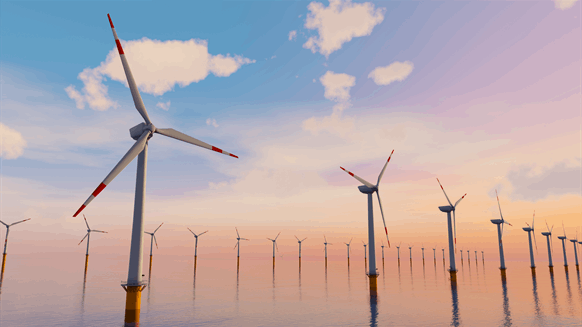Germany has granted rights to build offshore wind power plants with a target of 30 gigawatts by 2030, raising more than $14 billion (€12.6 billion), most of which will go towards easing utility bills. electricity
Four sites with a combined planned generation of 7,000 megawatts have been awarded in the country’s inaugural auction of wind power facilities, the Federal Grid Agency said in a news release this week.
Three of the projects are on the German side of the North Sea and one in the German Baltic Sea, which had the highest winning bid at almost $2.33 million (€2.07 million) per Baltic Sea MW OFW O2-2 GmbH & Co. KG. North Sea OFW N12-1 GmbH & Co. KG offered the highest winning price for one of the North Sea sites at more than $2.1 million (€1.875 million) per MW. One project received a bid of nearly $2.06 million (€1.83 million) per MW from bp OFW Management 1 GmbH. Another place went to bp OFW Management 3 GmbH, which had a winning bid of around $1.75 million (€1.56 million).
Each of the North Sea sites has a capacity of 2,000 MW while the Baltic site has 1,000 MW.
“Successful tenderers are now entitled to a planning approval procedure for the construction and operation of offshore wind facilities on site and the grid connection and required capacity,” the announcement said.
The wind farms are scheduled to come into operation in 2030.
“The results confirm the attractiveness of investing in offshore wind energy in Germany,” said the president of the Federal Grid Agency, Klaus Mueller, in the press release. “Competition in offshore wind power has never been higher.”
Seventy-two auction rounds were held for the Baltic site, while the three North Sea projects reached 65, 64 and 55 rounds.
“The results are a key step towards achieving the offshore expansion target of 30 gigawatts by 2030,” Mueller added.
Ninety percent of the proceeds will go towards reducing energy costs for consumers, with the remaining funds going towards marine conservation initiatives and sustainable fisheries.
“Contributions to reduce electricity costs must be paid in equal annual installments to the operators of transmission systems necessary to connect offshore wind farms within a period of 20 years from the time a wind farm comes into operation from of 2030,” the agency said.
Germany aims to increase the share of renewable energy in its energy mix to 80 percent by 2030, according to the Renewable Energy Sources Act (EEG). Last year, the share of renewables in electricity generation in Europe’s largest economy stood at 44%, up from 39.8% in 2021, 43.8% in 2020 and 39.7% in 2019, according to data from the country’s statistics agency Destatis.
Wind power has been the leader in renewable energy generation in Germany, accounting for 125.3 billion kilowatt hours (kWh) of the total electricity generation of 571.3 kWh in 2022.
Germany has also enacted a law to shut down all coal-fired power plants by 2038. And on April 15, 2023, the nation shut down its remaining three nuclear power plants.
To contact the author, please email jov.onsat@rigzone.com


